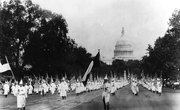Alternative schools have historically been the destination of children who were "bad" and could no longer remain in their neighborhood schools. Many states have alternative schools, sometimes called "continuation schools," for children who have been suspended long term or expelled from their mainstream public schools. However, not all alternative schools are for bad kids. There are many alternative schools that serve different community needs.
History
According to the Encyclopedia of Children's Health, alternative schools have been in existence in the United States since the 1970s. They were originally intended to serve a population that was having difficulty in their neighborhood schools and were required by federal law in 1978. Students who had medical complications, behavior issues, psychological or emotional issues, and substance abuse issues could be served in alternative schools. The trend toward alternative schooling is growing and encompasses more than so-called "bad" kids. The National Center for Education Statistics reports that 64 percent of school districts offered alternative schooling and enrolled close to 650,000 students in 2008. Since the year 2000, the number of alternative schools in the U.S. has nearly doubled.
Charter Schools
One type of alternative schooling is the charter school. According to the National Alliance for Public Charter Schools, in 2012 there were approximately 6,000 charter schools in the United States. The number of charter schools has nearly tripled in ten years. Charter schools are allowed in 42 of 50 states. Charter schools were instituted when Minnesota passed the first charter school law in 1991. Under state law, charter schools write their own charters, or contract, with individual school districts. Charter schools differ from public schools in their lack of bureaucracy, school emphasis, a focus on a particular subject or group of subjects -- math and science or languages, for example -- student preparation for a specific career focus or track, and in their teaching methods. This means that charter schools can be narrowed to fit particular groups of students -- disabled, at-risk, or gifted, for instance -- depending on the focus the charter school wishes to have.
Online Schools
Online public and private schools, also called distance learning or e-schools, have been in existence in the United States since 1994 when Utah opened its first e-school. In 2009, it was estimated that 1 million students used online learning at least part of the day. According to the City University of New York, online education targets students who need high school credits and credit recovery as well as students who have not been successful in the traditional high school setting because of the pace, the number of classes needed per day, or even the time of day. Online education can serve the needs of many students who need flexible, mobile schooling.
Magnet Schools
Magnet schools, by contrast, often serve the gifted and talented population within a school district. According to Magnet Schools of America, magnet schools sometimes have entrance criteria or examinations. Some magnet schools, like charter schools, are open to anyone who wants to attend. Many magnet schools are culturally diverse by law. According to EducationNext, magnet schools have been in existence since 1968 when the early magnet schools sought to draw white students to predominantly black schools with a promise of innovation. There are approximately 3,500 magnet schools in the United States. The number of magnet schools has remained fairly consistent over the last 20 years as has federal funding for magnet schools.
Related Articles
References
Resources
Writer Bio
Lori Garrett-Hatfield has a B.J. in Journalism from the University of Missouri. She has a Ph.D. in Adult Education from the University of Georgia. She has been working in the Education field since 1994, and has taught every grade level in the K-12 system, specializing in English education, and English as a Second Language education.










